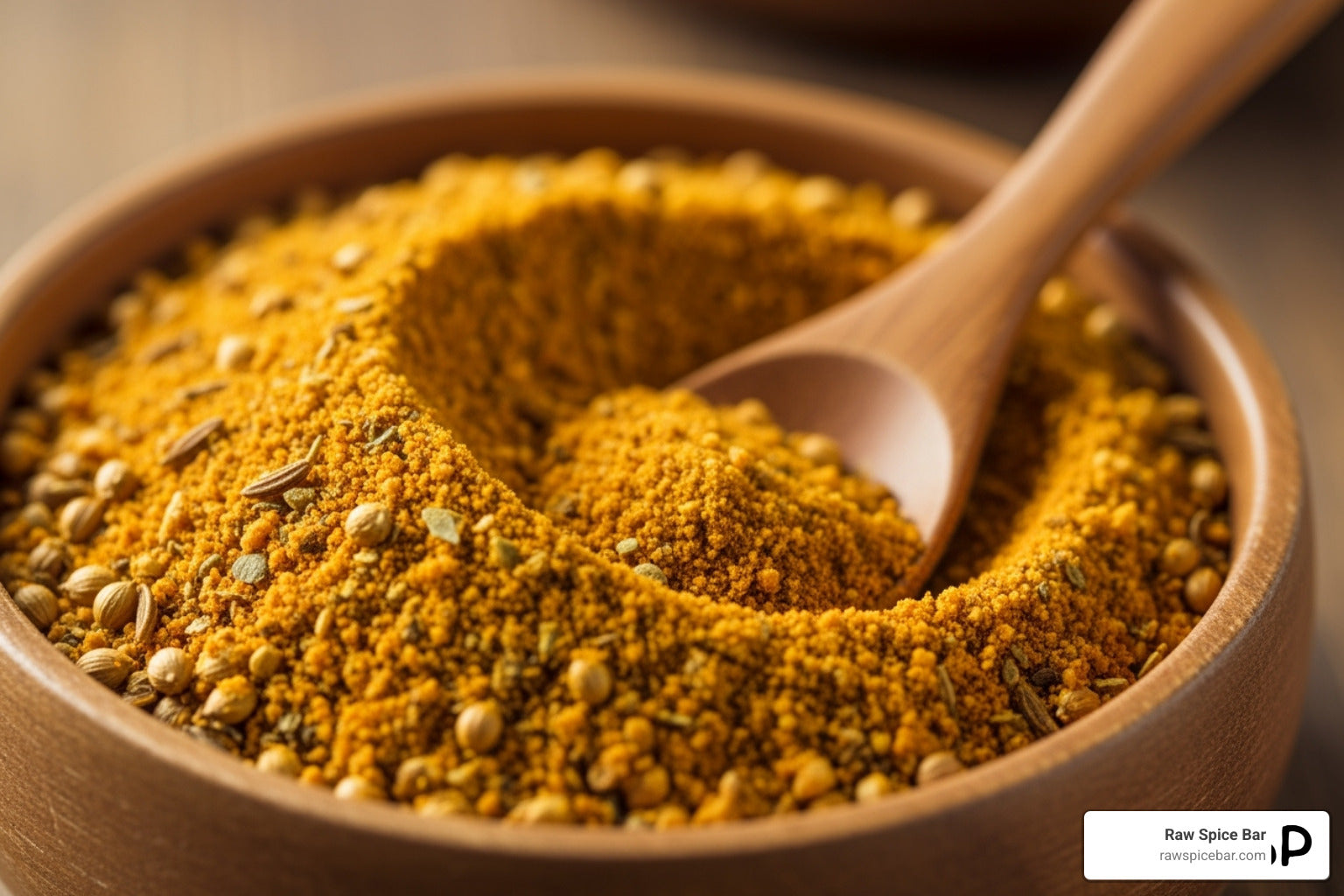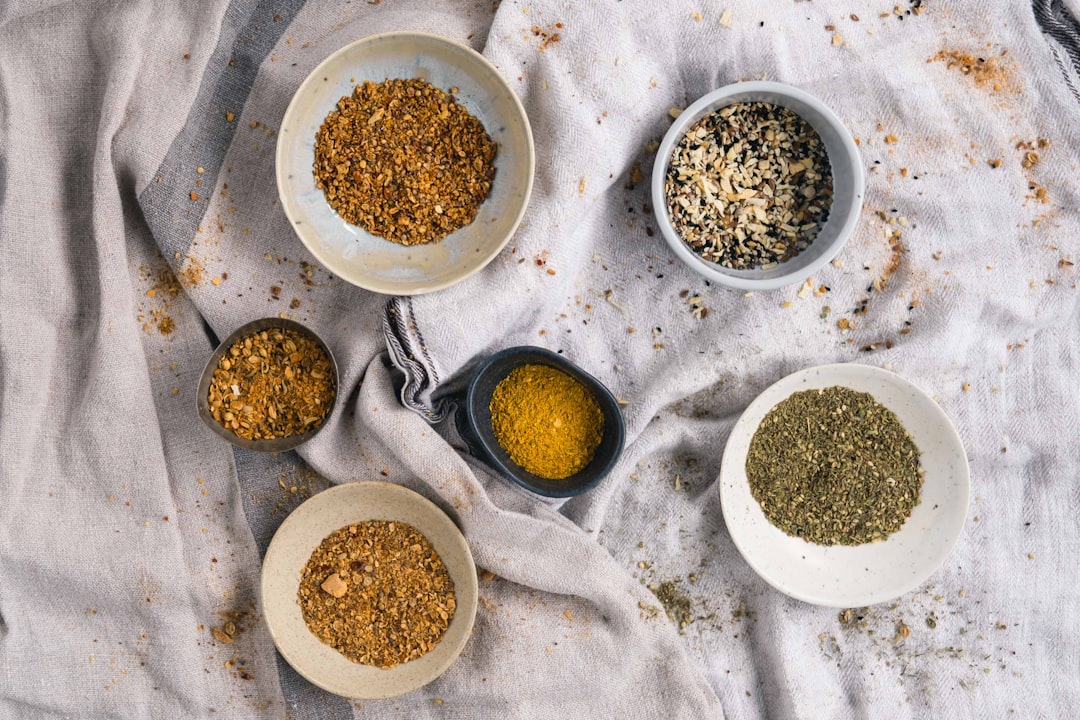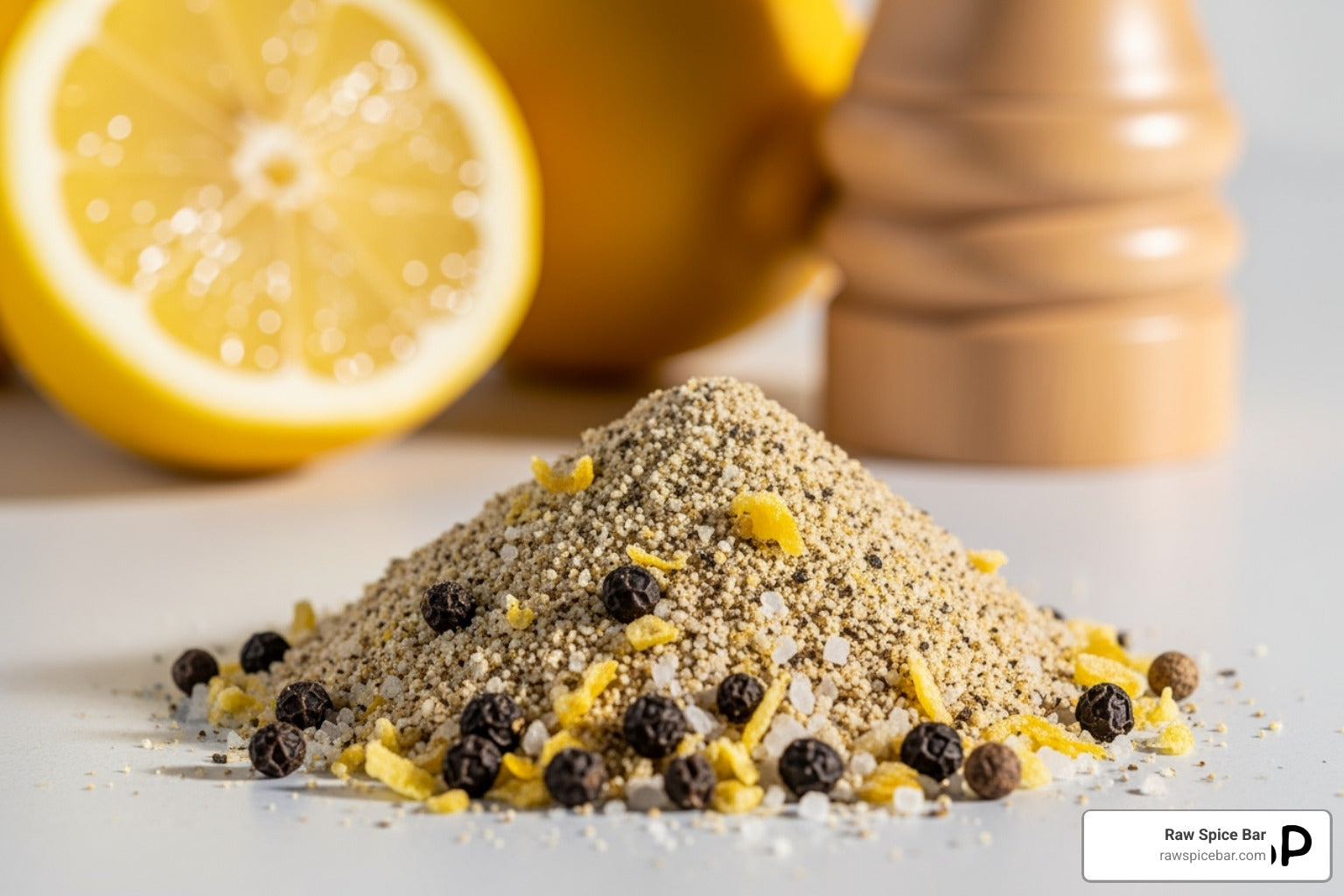When every dish deserves a burst of authentic flavor, relying on ordinary spice packets just won't do. That's where the magic happens with each spice packet from RawSpiceBar. Every packet is designed to inspire, giving you access to a treasure trove of global flavors, all crafted to elevate your cooking experience. Embrace the excitement of cooking with our unique blends that bring a taste of world cuisine right to your kitchen.
Imagine a spice journey that takes you to sun-drenched Mediterranean coasts or lively Creole streets, all without leaving home. RawSpiceBar delivers this experience through a carefully curated spice subscription. Each month, new blends crafted from the finest ingredients arrive at your door, ready to transform your meals. These spices don’t just flavor your food; they tell stories that connect you to diverse culinary traditions.
The RawSpiceBar subscription is more than just a delivery; it's a doorway to culinary adventures. Each packet comes paired with recipe cards, ensuring you can savor the excitement of global cuisine effortlessly. Whether you're a seasoned chef or a home cook, these spices are designed to turn everyday dishes into extraordinary creations, sparking joy and inspiration with every use.
The Essence of Spice Packets
Spice packets hold the key to transforming ordinary dishes into culinary masterpieces. By understanding their historical significance and the wide range of flavors they offer, you can appreciate the depth and versatility they bring to your kitchen. These elements not only add taste but also tell the rich stories behind each blend.
Historical Significance
The journey of spice packets dates back centuries. Spices have powered trade routes and shaped economies. They were once as valuable as gold, often traded between distant lands. Each packet today is a small tribute to these historic exchanges that connected cultures through flavors.
Ancient civilizations like the Egyptians and Romans used spices to preserve food and enhance flavors. The East India Company and Silk Road flourished on the trade of exotic spices. These packets hold the wisdom and tradition of those who blended them with care.
Diverse Range of Flavors
Spice packets offer a spectrum of flavors, from the bold heat of chilies to the earthy depth of cumin. Each blend combines these tastes to create unique profiles that suit various cuisines. You can explore the warm comfort of cinnamon or the zesty kick of sumac in just one packet.
At Raw Spice Bar, spice blends bring together tastes from around the world. By providing new spice blends with recipe cards each month, we help you turn simple meals into extraordinary culinary adventures. Whether you're cooking a Creole jambalaya or a Greek salad, these packets elevate your dishes with authentic flavors that burst at every bite.
Choose a global spice subscription to make your cooking easy, fun, and full of healthy, salt-free flavors. This way, each meal becomes an exciting journey through different cultures and tastes.
Unpacking Flavors
Exploring the world of spices is like opening a doorway to diverse culinary cultures. Understanding their characteristics, regional influences, and sensory aspects can elevate your cooking to new heights.
Herbs vs. Spices: Defining Characteristics
Herbs and spices are essential in adding depth to your food. Herbs come from the leaves of plants and are often used fresh or dried. They bring bright, fresh flavors to your dishes. Spices, on the other hand, come from seeds, bark, roots, or fruits and are usually dried. They can deliver bold, intense flavors that transform any meal.
Knowing the difference helps you choose exactly what your dish needs. For example, basil leaves brighten a tomato sauce, while cinnamon adds warmth to baked goods. At Raw Spice Bar, our spice blends combine these elements to create unique and robust flavors that make your meals stand out.
Regional Spice Blends
Each region around the world has its own distinctive spice blends. These blends capture the essence of local cuisines and traditions. For instance, Indian garam masala combines cardamom, cinnamon, and cumin for rich and warming dishes. In contrast, Middle Eastern za'atar features thyme and sesame seeds for tangy and earthy notes.
Texture and Color Contributions
Spices do more than add flavor; they affect the texture and color of your dishes as well. Paprika can give a smokey depth and bright red color to stews and roasts. Mustard seeds add a crunchy texture and a nutty, spicy taste when roasted.
A well-chosen spice can make your dish visually appealing and add unexpected texture. This makes the dining experience more enjoyable.
Culinary Techniques with Spice Packets
Spice packets can transform ordinary dishes into extraordinary culinary experiences. These packets offer diverse flavors that cater to different cooking methods. Understanding how to use these spices can enhance your meals significantly by creating exciting and balanced flavors.
Dry vs. Wet Cooking Methods
When using spice packets, the choice between dry and wet cooking methods is important. Dry methods like roasting or grilling can enhance the aroma and texture of spices. A dry rub is perfect for meats, intensifying the flavor profile as the spices cook into the surface.
Wet methods such as simmering or braising allow spices to infuse deeply into sauces and broths. This technique is ideal for creating rich, flavorful stews or curries.
Layering Spices for Depth of Flavor
Layering spices means adding them at various stages of cooking to bring out different flavor notes. Start by toasting the spices to release their oils, which can add a robust base flavor to your dish. Next, add a second layer during cooking to enhance depth and generate a harmonious blend.
Finish with a sprinkle of fresh spices before serving. This step brightens and elevates the entire dish.
Taste Balancing in Dishes
Balancing flavors involves adjusting the elements of sweet, salty, sour, and spicy to create an appealing dish. Using spice packets allows you to enhance the natural taste of ingredients without overwhelming them. For instance, adding a pinch of heat can balance sweeter elements in a dish.
Cultural Inspirations in Spice Use
Spices have played a crucial role in shaping culinary traditions and inspiring fusion cooking. They bring unique flavors and cultural stories to the dishes you prepare.
Traditional Uses in World Cuisines
Spices have been at the core of many cuisines across the globe for centuries. In Indian cuisine, a mix such as garam masala adds depth with warm spices like cumin, cinnamon, and cardamom, creating layers of flavor in dishes like curries.
In Ethiopian cooking, berbere spice is central, offering a fiery mix that enhances stews. Similarly, herbs de Provence brings the aroma of the French countryside into soups and roasts through thyme, rosemary, and basil.
These blends convey cultural stories and enhance the dining experience, making your meals a journey through diverse culinary landscapes.
Fusion Cooking and Innovation
In modern kitchens, fusion cooking creatively combines elements from different culinary traditions. By using spice blends, you can add unique twists to recipes. Many chefs enjoy experimenting with spices to create new flavors.
For example, combining Thai and Mexican ingredients can yield a spicy, tangy taco with lime and lemongrass notes.
Creative Applications
Spices offer endless possibilities in the kitchen, adding depth and excitement to various dishes. They can transform everyday meals, elevate vegetarian and vegan recipes, and bring unexpected twists to baked goods and desserts.
Improvisation in Everyday Cooking
Spices are your best friends when improvising in the kitchen. You can skip traditional recipes and let your taste buds guide you. A pinch of cumin adds warmth to soups, while a dash of paprika can spice up your scrambled eggs. Mixing spices like turmeric and coriander can create unique and exciting flavors in stir-fries.
You don’t have to stick to one cuisine. Combine cinnamon and chili powder to bring a sweet and spicy kick to roasted nuts.
Spice Packets in Vegetarian and Vegan Recipes
For those following vegetarian or vegan diets, spices are essential. They add depth and complexity to plant-based dishes, turning simple vegetables into savory delights. Use smoked paprika in your chili for a rich, smoky flavor without meat. Middle Eastern spices like sumac can brighten up a salad dressing, adding unique tang.
Try curry powder with chickpeas for a quick, flavorful curry. At Raw Spice Bar, our global spice subscription makes it easy to discover exciting, bold flavors. Our healthy, salt-free spice blends ensure your vegetarian or vegan meals are anything but bland. Experiment with Moroccan ras el hanout in tagines or Indian garam masala in dhal for a burst of flavor.
Spices in Baking and Desserts
Spices aren't just for savory dishes; they can elevate baking and desserts too. A pinch of ginger adds warmth to cookies, while cardamom can enhance the flavors of a simple cake. Use nutmeg in your muffins for that extra cozy, comforting touch.
You may discover exotic spices like star anise or saffron to create unforgettable pastries. Pair spices with fruits, like cinnamon with apples or clove with pears, for seasonal treats.
Crafting Your Own Spice Blends
Creating your own spice blends can elevate your cooking to new heights. This not only ensures freshness but also lets you customize flavors to your liking. Learn about the basics of mixing spices and how to store your blends for maximum flavor.
Principles of Blend Composition
When crafting spice blends, start by choosing a base flavor. This could be something like cumin or paprika.
Next, consider complementary spices to enhance the base flavor. For example, if you're building a Mexican blend, you might add chili powder, garlic, and oregano.
Balancing flavors is key. Too much of one ingredient can overpower the others. Taste your blend as you go to ensure harmony.
At RawSpiceBar, we focus on using quality, fresh ingredients to unlock vibrant flavors like our subscribers enjoy. You can also experiment with spices from different cuisines. Try mixing cardamom with cinnamon for a Middle Eastern-inspired blend, or curry powder with turmeric for an Indian touch.
Storing Homemade Spice Mixes
Proper storage is essential to keep your spice blends fresh. Use airtight containers to preserve flavor and prevent moisture.
Label jars with the blend name and date. This way, you can keep track of freshness and replace them as needed.
Store your containers in a cool, dark place. Sunlight and heat can reduce the potency of spices.
Remember, freshness matters more than jar size. At RawSpiceBar, we recommend using blends within a few months for peak flavor. This ensures that each meal is as delicious as you envision.
Health and Nutrition
Spices are more than just flavor enhancers; they have notable health benefits. Many spices act as antioxidants and anti-inflammatory agents. They can elevate the taste of your dishes while contributing positively to your well-being. Understanding these benefits and knowing how to cater spices to dietary needs can enrich both your culinary and health journey.
Spices as Antioxidants and Anti-Inflammatory Agents
Certain spices are renowned for their health-promoting properties, including their antioxidant and anti-inflammatory effects.
For instance, cinnamon, black pepper, and ginger are well-known for these benefits. Antioxidants help combat oxidative stress in your body, which can lead to chronic diseases.
Similarly, anti-inflammatory agents reduce inflammation, which is linked to various health issues. Using spices like turmeric and ginger regularly might support overall health. These spices can add depth to your meals without compromising your dietary needs, offering both flavor and health.
Considerations for Dietary Restrictions
When considering spices for different dietary restrictions, it's crucial to identify which blends are appropriate.
People with allergies or specific health conditions may need to avoid certain spices or additives commonly found in store-bought blends.
It's essential to read labels and choose spices that align with your health requirements to maintain both safety and enjoyment in your culinary experiences.
Spice Packet Selection and Storage
Selecting and storing spice packets correctly is key to maintaining their flavor and aroma. Freshness matters as it ensures spices provide rich taste and enhance your dishes. Here, you will find guidance on choosing quality spices and tips on preserving their potency.
Quality Indicators
When selecting spice packets, focus on freshness and origins.
Fresh spices have a vibrant color and a pronounced aroma. A robust aroma often indicates a high-quality spice.
Packaging is also crucial. Look for packets that seal tightly to keep moisture and air out. Transparent packaging can help you examine the spice's color, but remember that excessive light exposure can degrade quality.
For a varied diet, consider a global spice subscription like the one offered by RawSpiceBar. This service provides new and diverse options for your kitchen.
Pro Tip: Evaluate the spice's name and origin on the packet. This can give you clues about its authenticity and taste profile. Buying from reputable suppliers like RawSpiceBar can ensure you're using exceptional ingredients.
Longevity and Preservation
Proper storage is essential for extending the life of your spices.
Keep them in a cool, dark place, away from sunlight and heat sources. A pantry or cupboard is ideal.
Use airtight containers to maintain freshness and prevent exposure to moisture. Glass jars or dark containers are excellent choices for spice preservation.
List of Preservation Tips:
-
Store in a cool and dry area.
-
Use airtight containers.
-
Keep away from direct sunlight.
When stored properly, spices remain potent for longer, thus enhancing your dishes over time. With a focus on freshness, like that of the Fresh Spice Blends from RawSpiceBar, you can turn ordinary meals into tasty delights, maximizing both flavor and health benefits.
Pairing Spices with Foods
Using the right spices can enhance the flavors of any dish and transport you to different culinary regions. Knowing how to match spices with proteins and vegetables can upgrade your cooking skills significantly.
Complementing Proteins with Spices
When it comes to proteins, spices can make a significant impact.
Chicken, for instance, responds well to bold flavors like cumin, smoked paprika, and thyme. These spices can enhance the natural flavors without overpowering them.
Fish pairs well with lighter options such as dill and lemon pepper, which bring out its delicate flavors.
Beef, on the other hand, finds its match with robust spices like black pepper, garlic, and rosemary. They add depth and richness.
Pork benefits from sweet and warm spices like cinnamon and nutmeg.
Enhancing Vegetables with Spice Profiles
Vegetables offer a versatile canvas for spices.
Root vegetables like carrots and potatoes pair excellently with earthy spices like turmeric and cumin. These spices enhance natural sweetness.
Leafy greens, such as spinach, love a sprinkle of nutmeg or garlic powder.
For something unique, try adding a hint of cardamom to roasted squash. It brings a whole new dimension to the dish.
Resources and Shopping for Spices
When looking for spices to inspire your culinary adventures, consider where you source them and the various options for shopping. From local markets to online retailers, each choice offers unique benefits and can significantly impact the flavors of your dishes.
Local vs. Global Spice Sources
Local markets are a fantastic place to find fresh and unique spices. Shopping here often means supporting nearby farmers and small businesses. You can also engage with vendors to learn about the spices' origins and uses.
On the other hand, global spice sources allow you to experience flavors from around the world. These spices might be harder to find locally but can add authentic taste to your cooking.
Online Spice Retailers and Marketplaces
Shopping online for spices makes accessing a wide variety of flavors from all over the globe convenient.
With a subscription, you receive new spices each month, transforming everyday cooking into creative and flavorful experiences. This approach allows you to keep your meals exciting and inspired without leaving your home. Plus, online shopping often provides detailed information about each spice, making it easy to choose the right ones for your needs.
Frequently Asked Questions
Explore diverse spice blends and techniques that can elevate your cooking experience. Learn how RawSpiceBar brings global flavors to your kitchen with their unique blends.
What are some popular spice blend recipes?
Popular spice blends include garam masala for Indian dishes, za'atar for Middle Eastern flavors, and herbes de Provence for French cuisine. Each blend combines specific spices that are essential to its regional taste.
How can one create their own unique spice mix?
Start by experimenting with different ratios of your favorite spices. Consider using salt-free options for a healthier take. Adjust the blend based on your preferred flavor intensity and the dishes you're aiming to enhance.
Which spices are most commonly used by chefs in various cuisines?
Chefs frequently use spices like cumin, turmeric, and coriander in Indian cooking. Meanwhile, basil and oregano are staples in Italian cuisine. Each culture has key spices that define their culinary essence.
What are some traditional spice combinations from different cultures?
The Moroccan ras el hanout combines warm spices like cinnamon, nutmeg, and allspice. In contrast, Chinese five-spice includes star anise, cloves, and Sichuan peppercorns. These blends are rooted in their respective cultural histories.
How can you interpret the flavor profiles of global spice mixtures?
Understanding flavor profiles helps you pair spices with foods. Warm spices like cinnamon can add sweetness, while spices like chili powder bring heat and excitement, making each spice blend unique in its taste.
What is the history behind all-purpose seasoning?
All-purpose seasoning emerged as a convenient option for home cooks, combining various spices and herbs into one easy-to-use blend. It aims to enhance a wide range of dishes with minimal effort.
Make every meal more exciting with Raw Spice Bar by exploring spice blends that tell the story of the world's cuisines.




